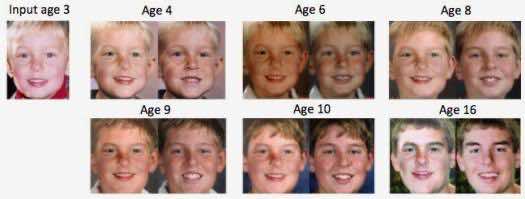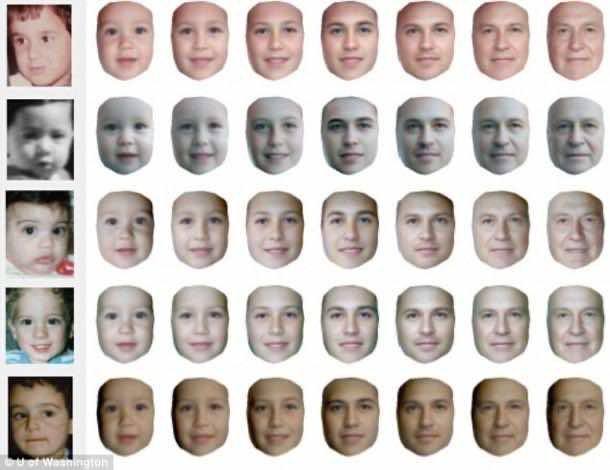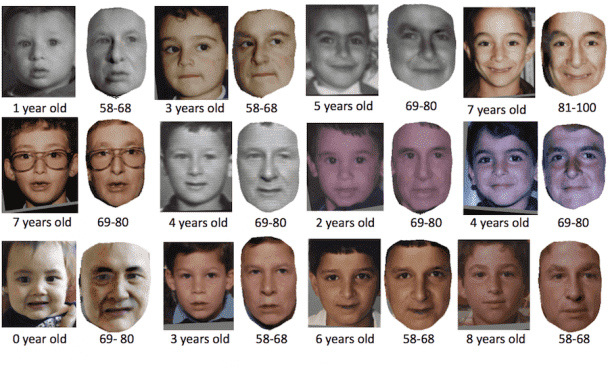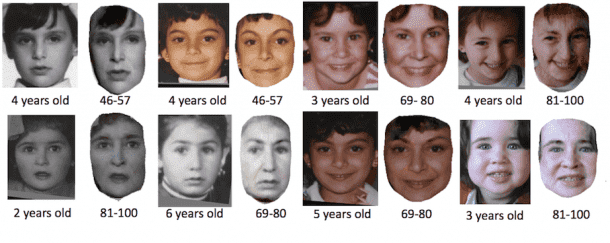When we see a kid under the age of five, it’s hard to predict what he or she will look like in 70 years. But a new software has been developed by the University of Washington that can do just that, and with great accuracy.
There have been many attempts in the past to create face-aging software, but this new software is based on the largest database ever of photos, which includes 40,000 pictures of people between the ages of 0 and 100. The key feature of the software is to deduce amazingly accurate results from pictures of very young children. Below, you can see a comparison of actual photos (right) and software generated predictions (left) of a young boy, using only the three-year old photo as input.
This software could play an important role in missing children searches. Currently, expert artists try to predict how a child might look at their present age using the child’s reference photo, pictures of relatives and knowledge of how faces age. The craft is described as “part art, part science and a little intuition”. The new software adds a little more science to the process. It is based on the measurements of about 1500 people in each age group. The photos came from the Internet, with researchers saying they used Google Images as their primary source.
The developing team wrote algorithms to calculate what was different between photos of people at age X versus photos of people at age Y, from it’s database of photos. They determined many important factors, such as how face shapes change between age groups, how skin texture changes, etc. The algorithms even deals with funny facial expressions and weird lighting in the reference photo, to produce the most realistic results. The software just need one picture of the child, and it is able to produce a series of pictures up to the age of 80.
Ira Kemelmacher-Shlizerman, one of the software’s developers, said she contacted the Center for Missing and Exploited Children about her work, but the software is not ready for crime-fighting just yet. The team is currently adding things to make the software more accurate, including hair color and ethnicity-specific data. There is no doubt that this software will be very useful, not only in the crime-fighting department, but also in other fields. Pretty cool, Isn’t it?







how could we get that software?
what’s the name of this software??
That is impressing…